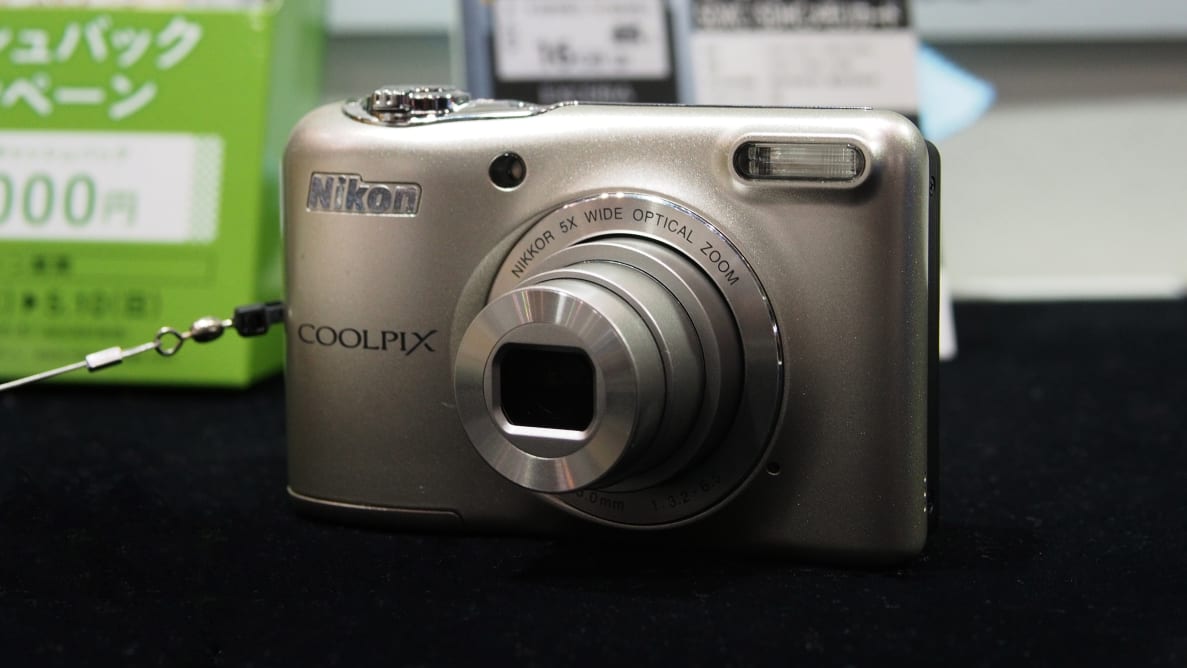The company's L-series cameras generally come in two flavors: long and short zoom. This year, they're represented by the 38x zoom Nikon Coolpix L840 and the more traditional Nikon Coolpix L32 (MSRP $119.95) with its ol' reliable 5x zoom. The two share a trait that has become increasingly rare in the digital camera world: AA battery compatibility.
Why would any modern digital camera rely on such an anachronistic form of power? Easy: Because you can find AA batteries basically anywhere in the world. This tiny camera may not offer groundbreaking specs or world-beating performance, but the best camera you have isn't the one you have with you—it's the one you can find a battery for. When you're backpacking in Bali.
Design & Usability
As basic as basic gets
From a design perspective, there's really not much to the Nikon L32. It's a compact, all-plastic point-and-shoot with a 5x optical zoom lens that telescopes out from the body when you turn it on. There's a tiny zoom toggle on top, which is actually so small that it's not all that easy to operate reliably.

The Nikon Coolpix L32 has just a basic control scheme that should be familiar to users of previous low-end Coolpix cameras.
Around back you'll find the majority of the camera's few physical controls, as well as the 3-inch, 230k-dot LCD. The LCD is among the worst that we've seen on a camera in the past year or so. It's fine enough for framing, but if you've got the camera above or below your field of view the picture gets washed out and can be difficult to see—a real shame since there's no other finder of any kind. Reviewing shots for critical sharpness is more or less impossible thanks to the low resolution.
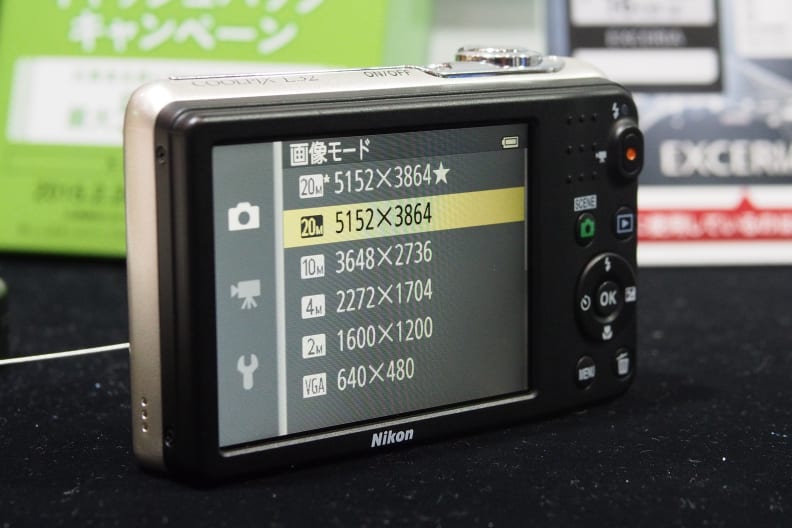
The rear LCD is acceptable for framing, but it's not bright and has a very poor angle of view.
The rear controls include buttons for accessing the menu, playback, and scene modes, as well as a video record button. The rear directional pad has a chintzy feel, but it includes access for the usual suspects like flash, macro, exposure compensation, and timer settings.

On the underside of the Nikon Coolpix L32 is the USB port, as well as the battery compartment.
The only design feature that separates the Coolpix L32 from the point-and-shoot pack is its compatibility with AA batteries. Though the camera is very slim, it actually bulges outward to accommodate the two batteries, giving you a little extra surface area to hold onto. The finish is a slick plastic that doesn't provide a ton of grip, but that's not really a problem since the camera is so small and light.
Features
Nikon's littlest Coolpix never seems to change.
Back in 2005, Nikon cooked up the Coolpix L1, a compact digital camera with a CCD sensor, a 5x optical zoom lens, face-detection AF, and SD memory card compatibility that ran on AA batteries.
Ten years and more than 20 variations later, Nikon is back with the L32... a compact digital camera with a CCD sensor, a 5x optical zoom lens, face-detection AF, and SD memory card compatibility that runs on AA batteries.
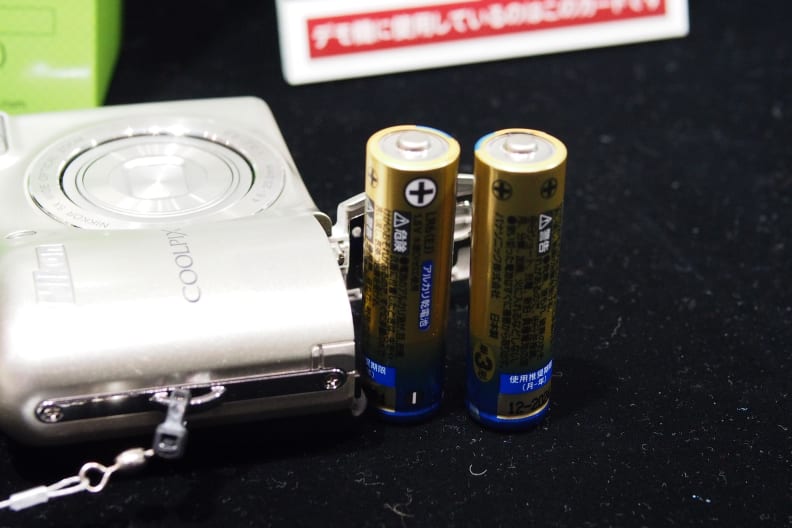
While you'll eat through dozens of AA batteries if you use the L32 every day, when traveling you can always find spares.
So what has actually changed? Not much, honestly. Resolution is up to 20.1 megapixels from the L1's 6.2 MP, and you can used SDHC and SDXC cards in addition to standard SD. The Nikon menu system is still incredibly basic, as the camera is designed to be left on full auto. The lens has a slightly narrower max aperture range at f/3.2–6.5, but it does have a wide 26mm-equivalent focal length that will work well for landscape shots.
The L32 also has a few creative extras such as scene modes like nostalgic sepia, high-contrast monochrome, selective color, toy camera effect, and others. There's also a few in-camera editing modes like painting, fish-eye, and miniature (tilt-shift).
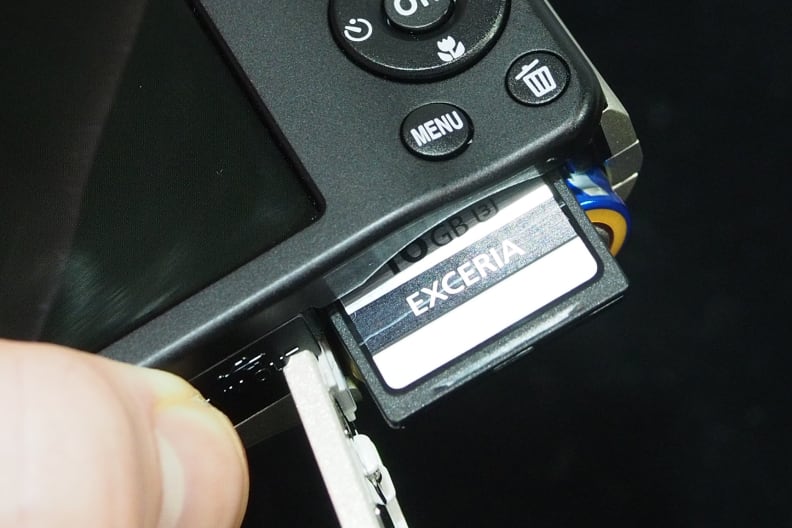
The L32 uses standard SD memory cards and is compatible with SDHC and SDXC cards, too.
You can also shoot video with the L32, though it's limited to just 720/30p, with minimal controls other than zoom. The sample video we shot on the show floor at CP+ 2015 didn't look very promising, either, though the questionable LCD quality may have been a contributing factor.
Conclusion
Cheap, but still overpriced
With smartphone cameras improving by leaps and bounds, the incentive to improve cheap point-and-shoots is all but gone. While that's caused smaller players like Olympus and Fujifilm to drastically cut compact camera production, Nikon and Canon are still churning them out with few if any improvements.
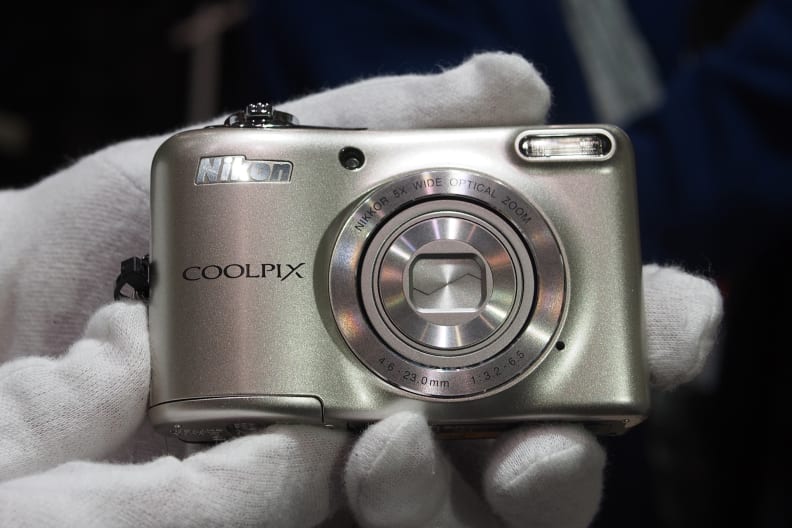
The Coolpix L32 is stylish for a low-cost camera, but that doesn't justify the $120 MSRP.
On the one hand, that's a shame; Nikon could certainly be trying harder, and likely would be if this class of camera wasn't rapidly approaching extinction. And while we can't say much without getting it into our testing labs, it's unlikely that the L32 is all that better than any basic point-and-shoot from the last few years, let alone your average smartphone.
On the other hand, it's nice knowing that if you've got an older L-series point-and-shoot that you love you can easily find a replacement that you'll be instantly familiar with. And then there's the fact that precious few cameras can run on AA batteries at all. It would be snobbish of us to presume that nobody finds these things useful; Nikon certainly isn't producing them out of nostalgia alone.
If you simply want or need a compact, battery-powered point-and-shoot, then the L32 should be a perfectly fine choice. Our one hangup is the $120 MSRP. Don't pay that much for any reason. Wait until this goes on sale, or grab last year's nearly identical Coolpix L30, which you can find for $80 or less. You definitely won't notice a difference.
Meet the tester
TJ is the former Director of Content Development at Reviewed. He is a Massachusetts native and has covered electronics, cameras, TVs, smartphones, parenting, and more for Reviewed. He is from the self-styled "Cranberry Capitol of the World," which is, in fact, a real thing.
Checking our work.
Our team is here for one purpose: to help you buy the best stuff and love what you own. Our writers, editors, and lab technicians obsess over the products we cover to make sure you're confident and satisfied. Have a different opinion about something we recommend? Email us and we'll compare notes.
Shoot us an email
